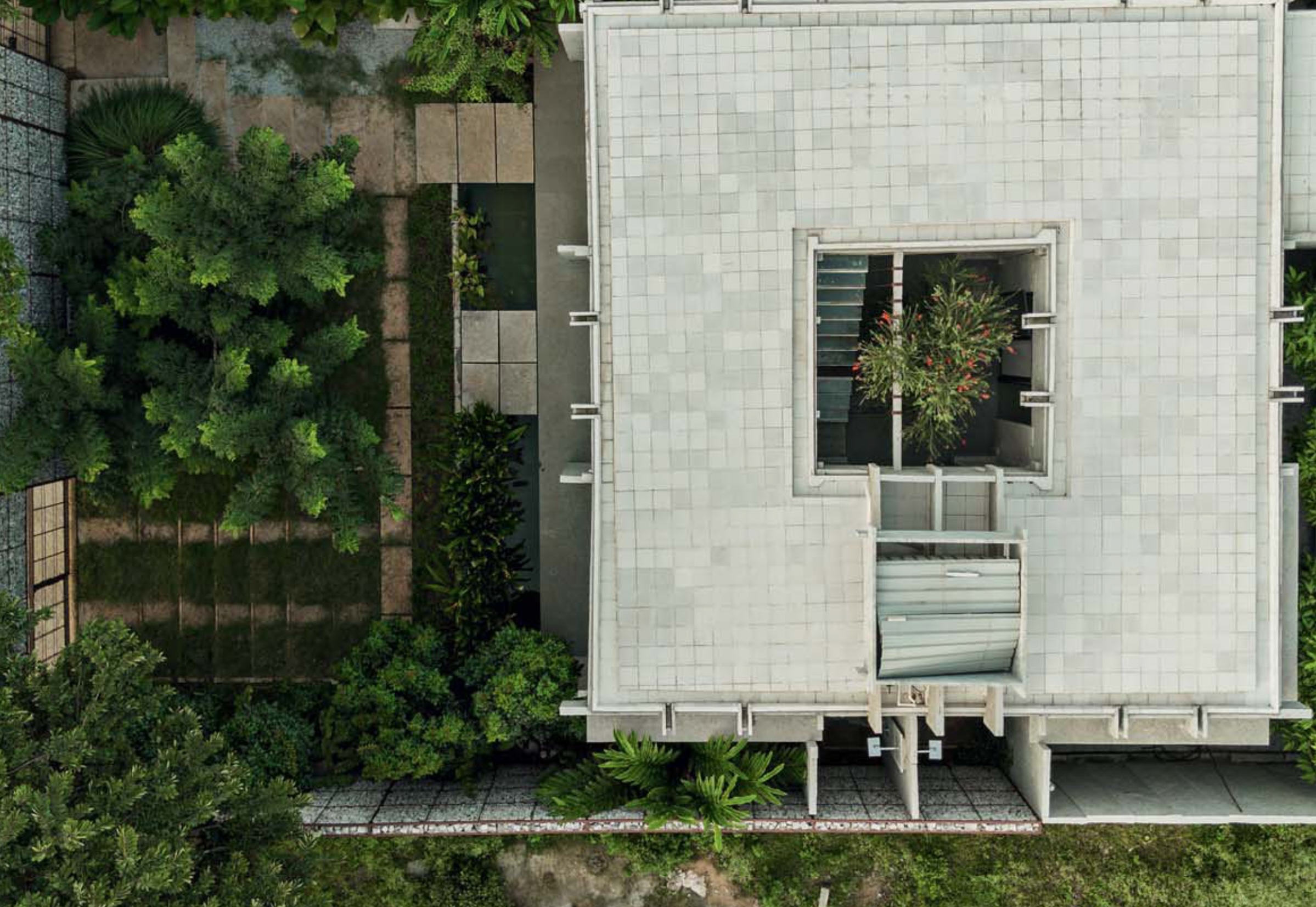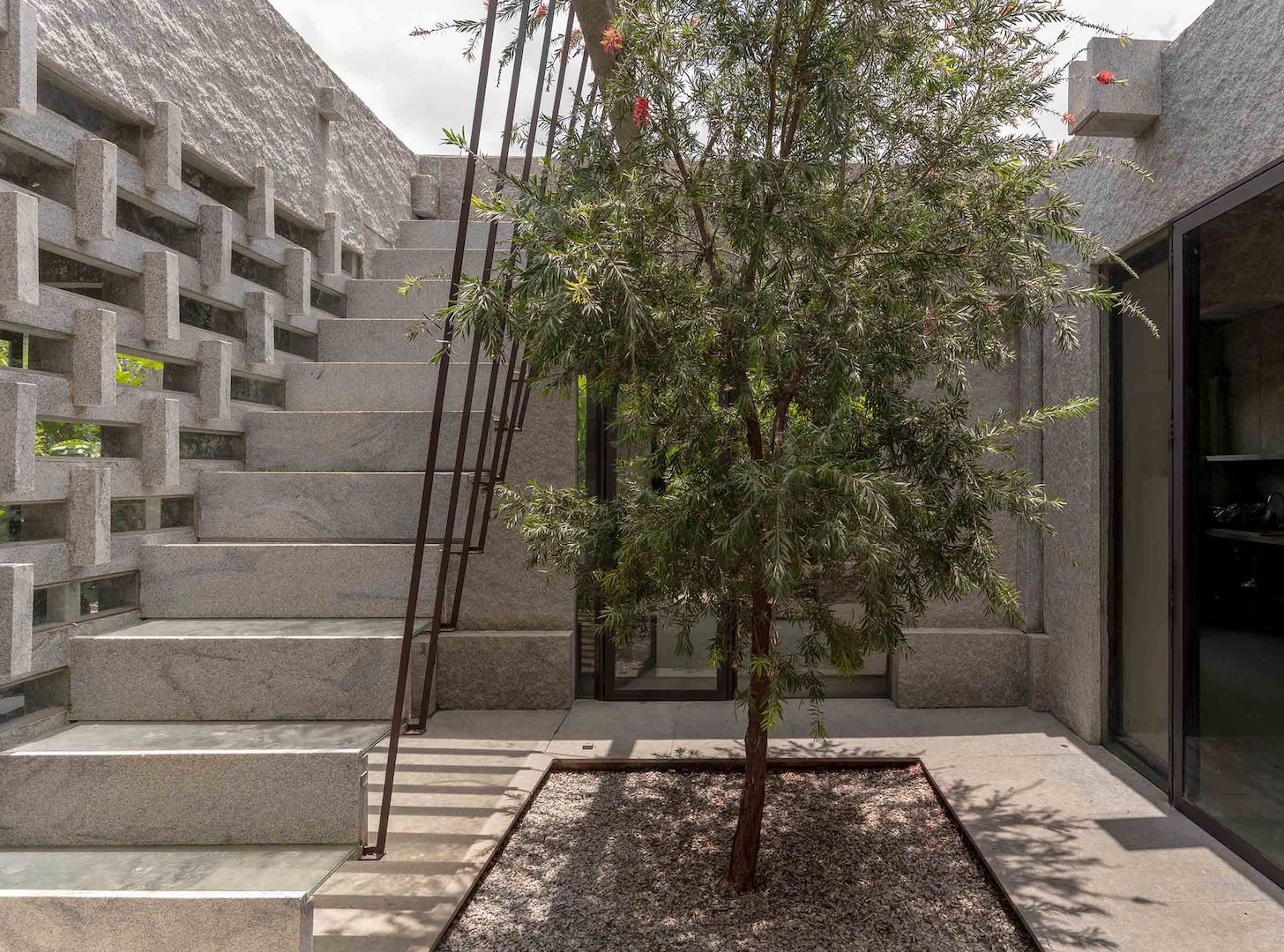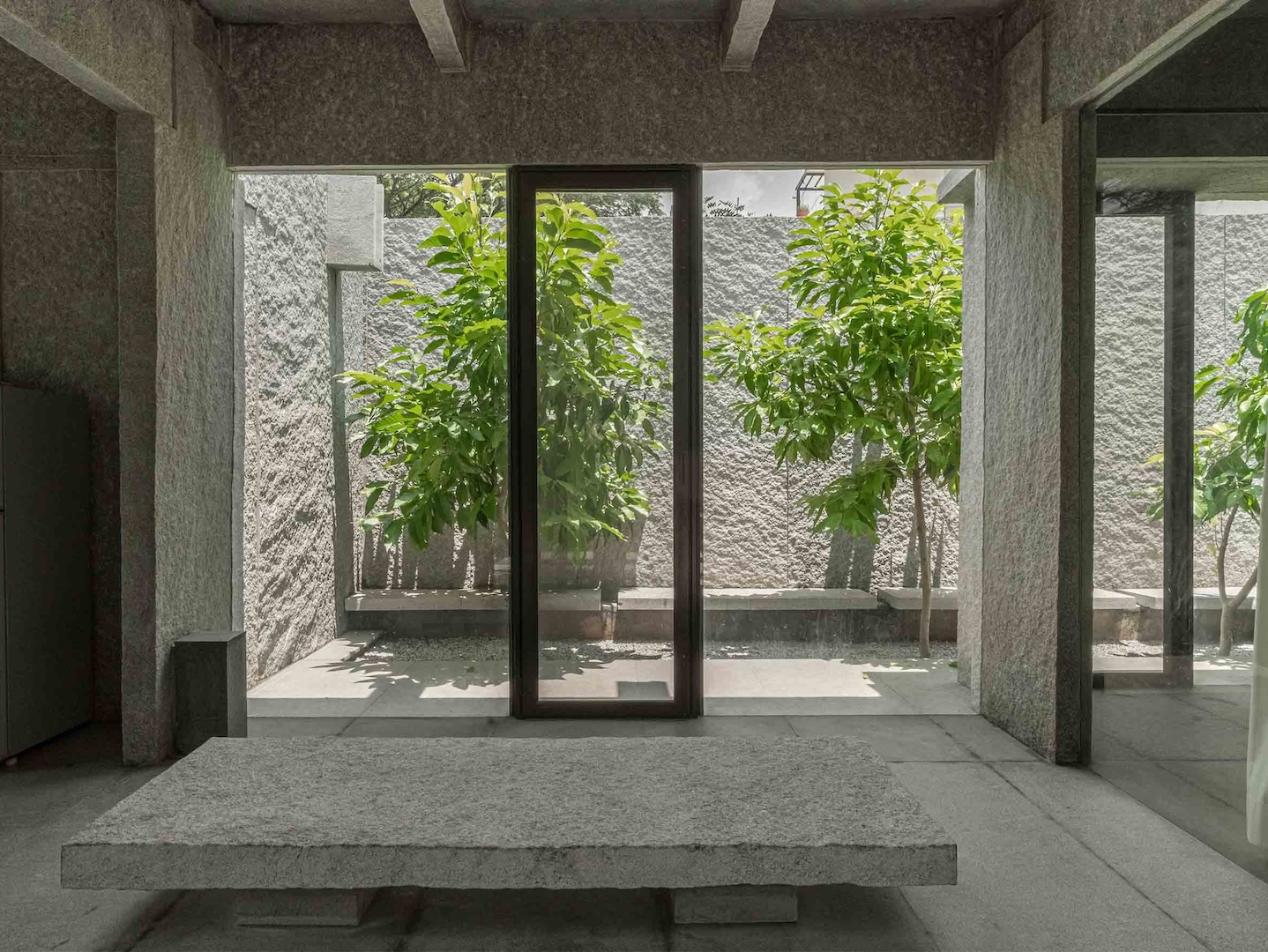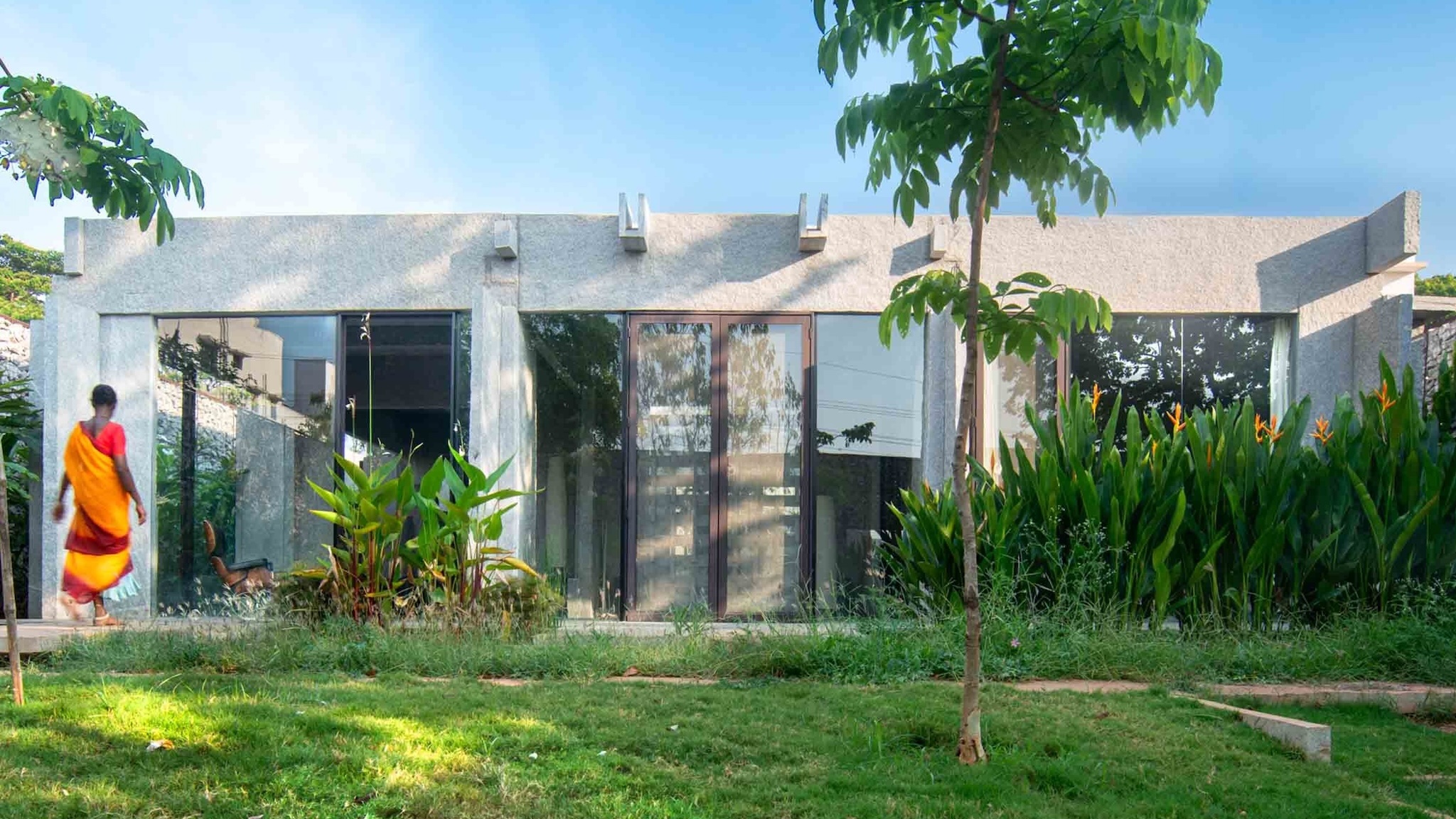Oh Ho House
Oh Ho House is inspired by its main material protagonist - stone - which is, in itself, informed by its locality. Situated in Bengaluru, southern India, it is the home of its designer, architect Senthil Kumar Doss, and the Indian office for his practice, Play Architecture.
The building has a poetic quality born out of an ephemeral moment of revelation in which Senthil noticed how the elongated rays of the setting sun discernibly softened the solidity of the stone walls of a South Indian temple complex. This subtle, yet stimulating visual memory has stuck with Senthil’s, and when beginning designs for the space, he naturally turned to stone.

Significantly, he has chosen chapdi, a stone that was once used in construction throughout the Karnataka region, but has since been relegated to utilitarian roles such as paving and compound walls. Quarried locally in slab form, the lightly shaded, sandy-grey stone is used throughout the build - both inside and out. Rather appropriately, the north-facing plot, which neighbours Bangalore’s national zoological park, is the site of a former quarry. Senthil underlines the material's significance:
“Used in its natural form, stone is one of the least carbon-intensive building materials - requiring no firing, minimal processing, and often transported short distances. At Oh Ho, the choice of chapdi is both poetic and practical: a low-carbon material reclaimed from the margins of construction and returned to architectural primacy.”

At 11x11m, the building is compact in size and leans far more to the minimal rather than the ornate. It’s also a highly functional space, arranged in organised in a nine-square grid referencing traditional Indian planning principles. Yet, it houses some surprising and joyful moments. In the centre, there’s the airy and light-flooded open courtyard, which plays host to a singular tree, placing nature at the heart of the environment. The design also deploys some innovative stone joinery reminiscent of dovetail carpentry, which not only makes for simpler construction but also allows the building to be dismantled and reused in the future.

The nine modules are designed to accommodate the maximum dimension of the chapdi slabs that could be transported to site, but still measure a comfortable 3. 6x3.6m. Gabion walls positioned on the site’s south, east, and west sides use leftover stone and create privacy and a light barrier for particularly sunny days. Capturing rainwater also plays an integral role within the design, forming a pond-like ecosystem before being guided into the community’s larger water system.
This sensitively designed building is more than the home or the studio space it provides, but a refuge with a keen sense of place. In 2024, it was recognised for its considered use of stone, picking up the World of Architecture Best Use of Stone Award, and its plain to see why. In Oh Ho House, Senthil and his family have a residence to forever enjoy the enchanting glow of the golden hour.
Play Architecture is an international practice and has recently launched in the UK. For more information visit: www.playarchitecture.in

